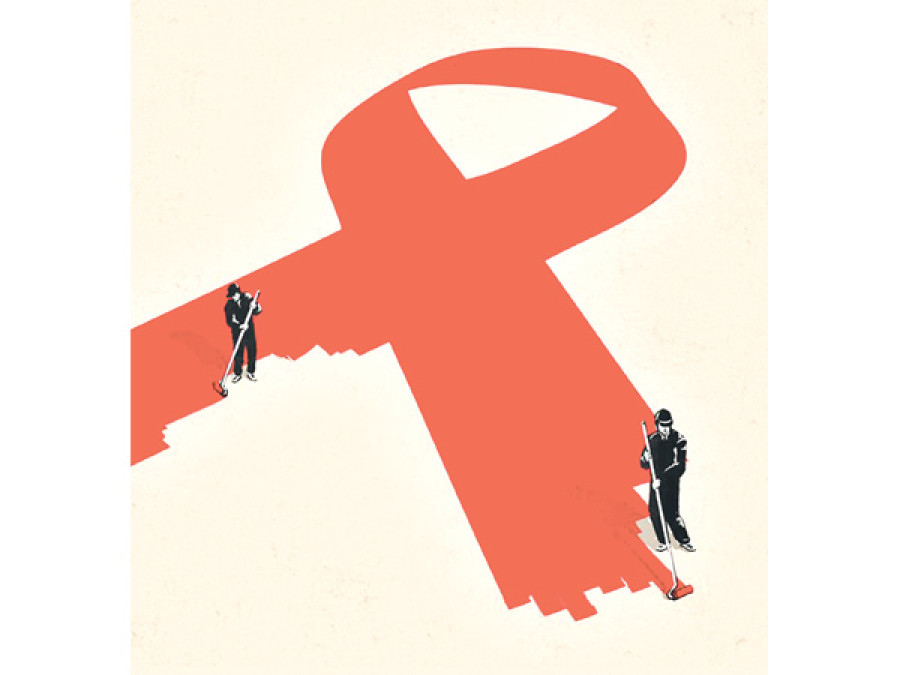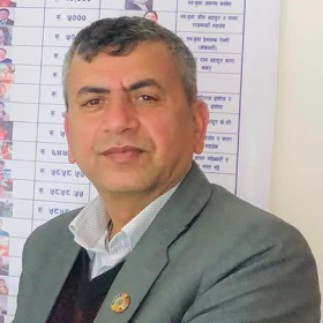Opinion
Battling the virus
Political commitment is key to preventing and controlling the spread of HIV/AIDS
Jhabindra Bhandari
HIV/AIDS continues to be one of the most formidable challenges to the development, progress and stability of our society at large. HIV, in many ways, is a consequence and cause of poverty. And that is why the epidemic is largely viewed as a development issue. Despite substantial progress, the epidemic continues to inflict immense suffering on many communities and families across developing countries. And political commitment is key to national responses that help prevent and control this epidemic.
Beyond health
As we progress in HIV prevention, we also need to think beyond the conventional approaches of prevention and some of the simplistic analyses of national responses. Most often, HIV/AIDS is simply perceived as a health issue and there is a limited understanding about the social determinants of the disease at large. In this context, it is high time we analysed the political and economic forces that shape both global and national responses. There is limited evidence on how political, corporate, religious, bureaucratic and public advocacy is influencing HIV/AIDS prevention, care and treatment. It is equally important to understand whether these factors help in the decision-making process to mitigate the impacts of the epidemic on individuals, families and communities.
Many social, economic and political factors drive and determine the responses to this epidemic. Unfortunately, the political dimensions of HIV/AIDS have remained largely hidden while analysing and evaluating national responses.
Dependency on aid The funding for both global and national responses is still not adequate to address the problems faced by the affected people and their communities. In Nepal, for instance, the national HIV/AIDS programme relies mostly on external funding from development partners. International NGOs and bilateral and multilateral agencies including the Global Fund have been supporting the government to plan and implement the HIV/AIDS programme across the country. But how long can we rely on foreign aid for combating HIV?
Due to the limited capacity of the National Centre for AIDS and STD Control (NCASC), the national HIV/AIDS programme is largely donor driven so there are valid concerns about its sustainability. So we need to analyse the resource gaps and effectively respond to the epidemic by prioritising the interventions through a multi-sectoral approach. It is also urgent to evaluate the existing funding framework and overall technical assistance provided by partners to generate practical evidences for financing HIV control in the country.
In most developing countries, limited funding continues to negatively impact their response to HIV/AIDS. Therefore, we need to explore innovative sources of funding. Moreover, there has been much criticism of large investments in HIV/AIDS, transparency of resource mobilisation and the effectiveness of such interventions.
During the 2011 High-Level Meeting on AIDS, UN member states adopted a political declaration on AIDS, providing a roadmap towards achieving the vision of zero new HIV infections, zero discrimination and zero AIDS-related deaths. This was instrumental in enhancing the leadership of various governments to develop an effective and sustained national response.
Implement policies
The first case of HIV was detected in Nepal in 1988. And the government developed a national HIV/AIDS policy in 1995 to mitigate the socio-economic impacts of HIV on society. This policy provided an overarching strategic framework for prevention and control of HIV/AIDS. After this, several mid-term strategies have also been formulated to provide programmatic directions for an effective response.
The new HIV/AIDS policy formulated in 2011 was a landmark in addressing people living with this infection. This policy underscored a few important guiding principles to ensure the rights of the affected people living with HIV/AIDS to access prevention, control, treatment, care and support services.
In order to ensure political commitment, this new policy not only seeks to ensure multi-sector coordination, but also demands a decentralised approach to effectively address HIV and livelihood issues at district and community levels. Unfortunately, the National AIDS Coordination Committee and District AIDS Coordination Committees are not functioning efficiently due to political instability and the absence of monitoring. This could have an adverse impact on multi-sectoral response at all levels.
The existing multi-sectoral response is not adequate as inter-sectoral coordination among line ministries is largely absent. In addition, the coordination between the NCASC, development partners and networks of people living with HIV/AIDS has to be further strengthened to avoid any misunderstanding and potential conflict of interest in securing funds for the HIV/AIDS programmes.
In 2012, the National Planning Commission, with support from Unicef, conducted a comprehensive review of sectoral polices relevant to HIV/AIDS, and developed guidelines for sectoral ministries to facilitate the process of mainstreaming HIV/AIDS in sectoral plans. The effective implementation of the policy, strategy and guidelines should be a priority for both the government and development partners to ensure efficiency and accountability to achieve the desired results.
Bhandari is a PhD candidate in public health at Chulalongkorn University, Thailand




 11.12°C Kathmandu
11.12°C Kathmandu










